Remote monitoring: Function, costs, coverage - 15 smart boat systems compared
Hauke Schmidt
· 26.10.2025






Keeping an eye on the anchor position while going ashore or checking from home whether there is water in the bilge and all hatches are closed? Or switch on the fridge or heating on the way to the boat? No problem with a remote monitoring system. What has long been standard in the automotive industry and in smart homes is also becoming increasingly common on yachts. And not just in the premium segment. This is due to the increasing networking of on-board systems and extensive mobile phone coverage.
Even if no sensors or electrics are available, remote bilge monitoring can be retrofitted easily and inexpensively. Even if it initially seems like a technical gimmick, it can be very useful: many owners want to know how high the battery voltage on board is, whether diesel or water needs to be refuelled before the weekend trip or - what is particularly important - whether and when the bilge pump is in operation.
Efficient remote monitoring and geofencing for pleasure craft
Thanks to digital switching options, there are additional functions: When the battery is low, the generator can be activated remotely; on the way to the boat, the heating or refrigerator can be switched on. Charter companies also benefit from the system, as they can check the location of their boats at any time.
Geofencing triggers an alarm if a boat leaves a defined area, enters a restricted area or heads towards a shoal. Acceleration sensors and abrupt changes in speed show charter companies whether there has been a grounding.
With a little experience, owners can use the acceleration sensors to judge whether their boat is securely moored in strong winds. Geofencing can be used as an anchor alarm. If the boat leaves the defined area, a warning is sent to the mobile phone. The system is also useful in the event of theft: if the digital fence is drawn around the harbour, the owner is notified as soon as their yacht leaves the marina. As long as a mobile phone network is available, the yacht transmits its position.
Sensors and data transmission
Door and hatch contacts as well as monitoring the interior using motion detectors also help against thieves. Technical defects, on the other hand, can be detected at an early stage with temperature or smoke sensors. Even the failure of the shore power network can be detected with the right sensors. Some systems also offer the option of alerting the harbour master or a service company if, for example, the smoke detector goes off or the battery temperature rises.
Position and voltage monitoring are virtually standard; which additional sensors and switching functions are possible, however, varies considerably and depends on whether the system is primarily intended as an extended alarm system, remote control or for cruise documentation and data analysis.
There are also major differences in terms of data transfer from the ship to the smartphone or on land. While Hello Sailor communicates directly with a phone via text message, the other systems use the internet to transfer the data to an app or to the manufacturer's cloud. The disadvantage of the cloud solution is that a subscription is almost always required, which incurs additional costs. Providers charge between 50 and 180 euros per year, which usually includes data transmission via mobile communications.
A standard designed for the Internet of Things (IoT), such as narrowband LTE or LTE-M, is often used for this purpose. The advantage of these systems is that they offer good network coverage and are comparatively inexpensive. The data rates are more than sufficient for tracking; however, you should not expect a broadband internet connection. For this reason, Smartboatia, for example, only synchronises the NMEA data collected in the hub with the cloud if the hub is connected to a WLAN.
Community solutions can also be used
One special feature is the LoRaWAN used by BoatOfficer. It is independent of the mobile phone network and requires very little energy. In addition to commercial providers, there are also community networks such as that of The Things Network; it can be used free of charge but does not have Europe-wide coverage.
The current network expansion can be checked on the internet. Advantage of the community solution: If there is already Wi-Fi at your own mooring but no LoRaWAN, the network can be set up with a simple socket router for around 140 euros.
MeSense, ZigBoat and the Orca Core do not have their own internet access. They rely on the fact that there is often already a mobile router on board and connect to it via Wi-Fi. This means there are no additional costs, at least for ZigBoat; MeSense finances the cloud service via a subscription. The harbour's own Wi-Fi can be used at the berth; however, in the event of theft, position transmission would quickly be interrupted without an external router.
The energy requirements of the devices are particularly interesting for battery-operated systems such as BoatOfficer or Sense4Boat: their self-sufficient sensors are designed to work for up to five years without changing batteries. But even if the device is connected to the on-board power supply, it should draw as little power as possible. The technology must be permanently switched on to ensure round-the-clock monitoring. This can lead to problems during long idle times. At least you can then follow live on your mobile phone how the on-board batteries are discharging - and be warned in good time.
Navigation solutions with monitoring
Orca
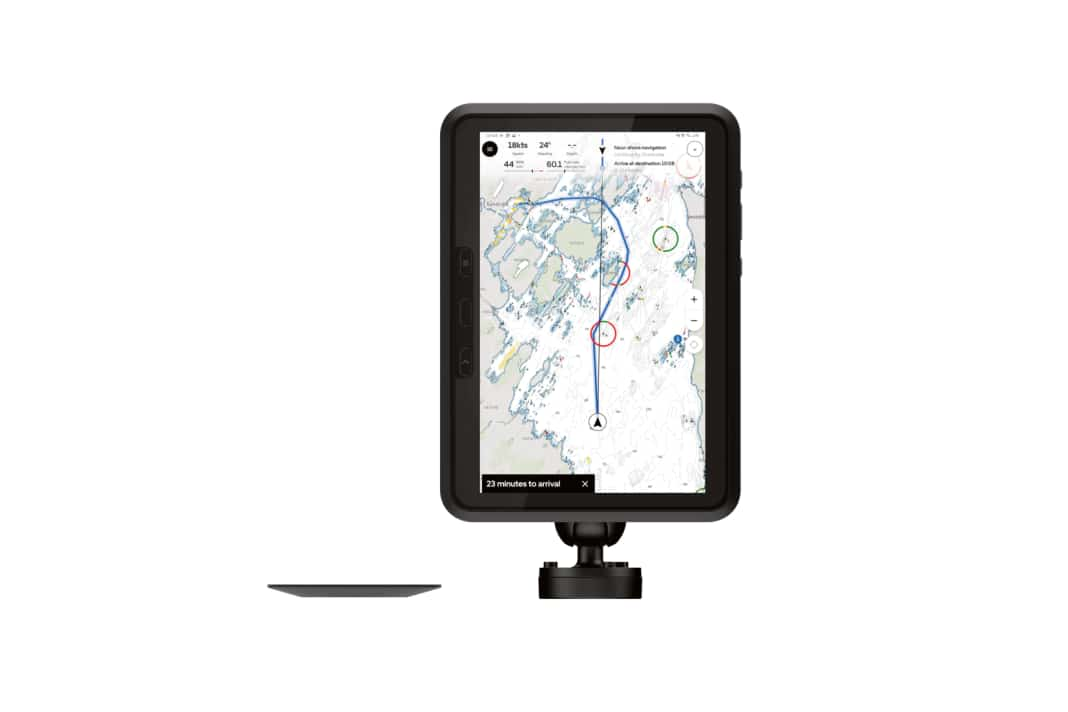


- Costs: 549 Euro
- Cover: Not applicable
- Ongoing costs/subscription: 149 euros per year, Orca Smart Navigation
- Gateway: WLAN or external router required
The remote monitoring functions of the navigation app from Norway are still under construction. To use them, you need the central unit called Orca Core 2. It is currently possible to mark an area on the map that the boat should not leave (geofence). If the Core crosses the boundary, there is an alarm on all apps connected to the Core. If an internet connection is available, this alarm also works outside the boat and can be used as an anchor alarm. The Core also generates an automatic logbook and records the position, supply voltage and data from the NMEA2000 on-board network. As soon as an internet connection is available, this data is uploaded to the Orca Cloud and can also be accessed remotely via the app. More information: getorca.com
Q2 display



- Costs: 2,599 euros, 279 euros for the cable set
- Cover: europe-wide
- Ongoing costs/subscription: depending on the data tariff
- Gateway: Integrated LTE
The plotter from Finland has an integrated 4G modem and is supplied with a broadband SIM card. It is continuously online, even when the device is switched off. The position can be called up remotely via the Q-Mobile app and a geofence can be set up. With the Q-Guard mode and an optional cable set, the display also monitors the bilge, battery voltage and engine even when switched off. Even if thieves were to disconnect the system, an alarm would be triggered immediately in the app. The plotter also supports digital switching. This means that owners can start the heating on board, for example, from home or while travelling. If you don't want to use the Finns' data tariff, simply install your own SIM card. More information: Ferropilot.com
Tracker with measuring function
BoatOfficer
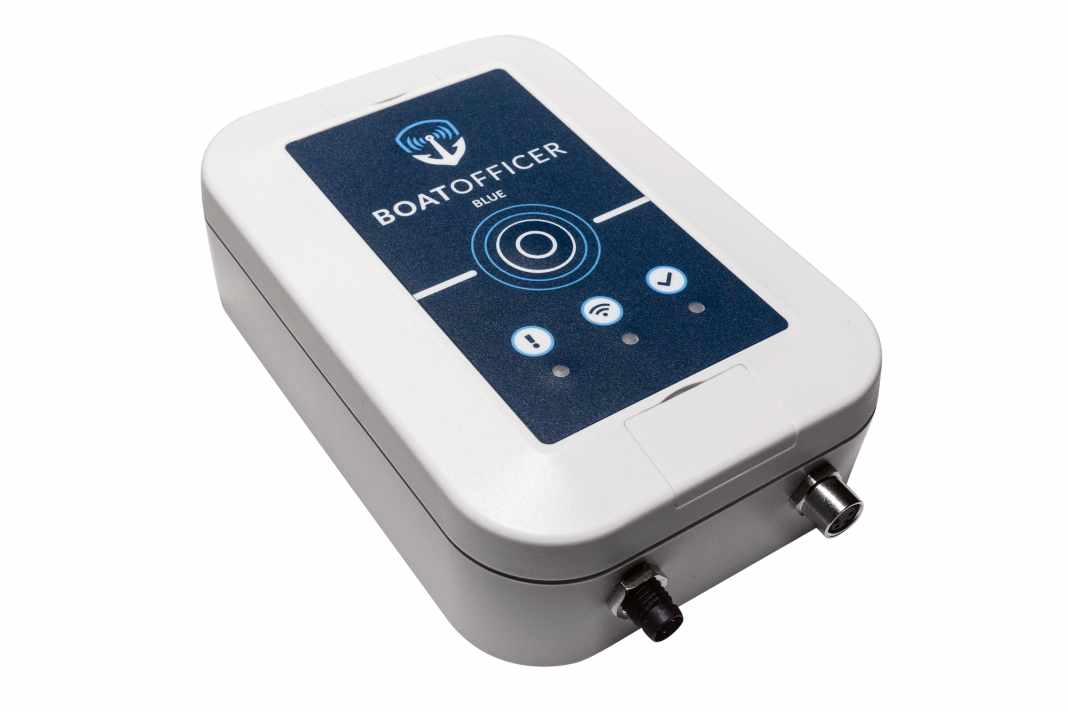


- Costs: 429 Euro
- Cover: europe-wide
- Ongoing costs/subscription: Basic free of charge, additional functions up to 100 euros per year
- Gateway: integrated, LoRaWAN
The waterproof box comes from Munich and uses the LoRaWAN wireless protocol designed for IoT devices. The advantage: there are no charges for use. The BoatOfficer can be operated for up to one year from the internal battery and does not require an external power supply. The disadvantage of the free LoRaWAN solution is the limited network expansion, so you should check the coverage before purchasing. The basic version includes a GPS receiver as well as acceleration and temperature sensors. In addition, up to two voltages can be monitored and two water detectors can be connected. In combination with the Pro service, an SOS alarm can also be triggered. Further sensors are in development. More information: Boatofficer.com
Hello Sailor
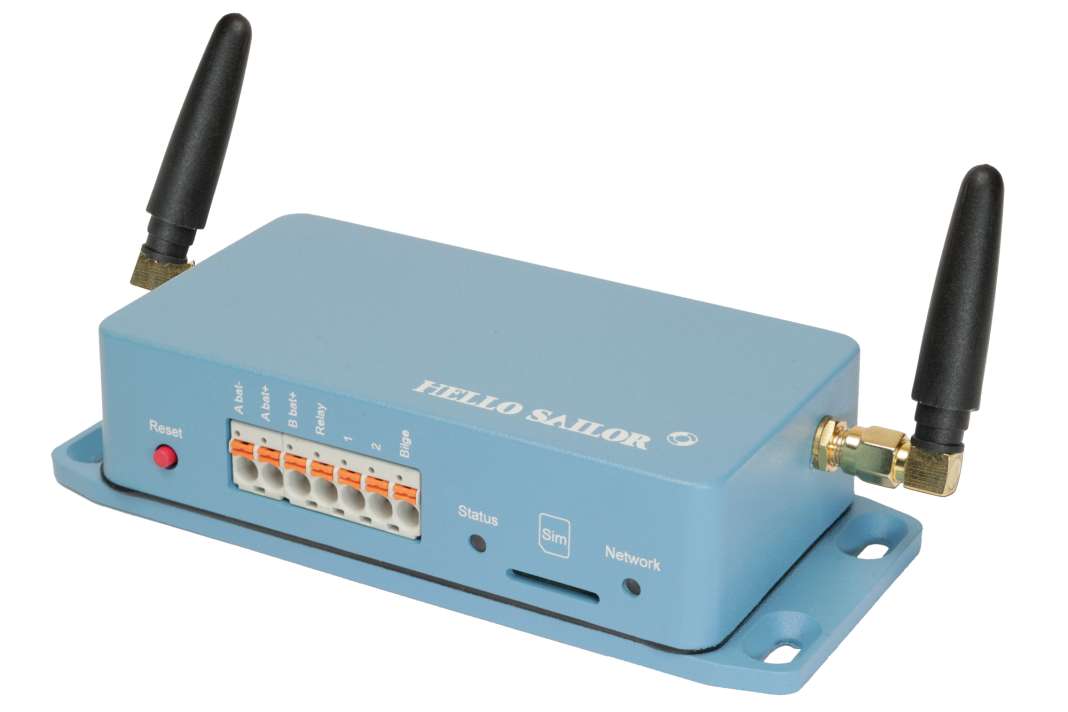


- Costs: from approx. 260 Euro
- Cover: Worldwide
- Ongoing costs/subscription: none, only data tariff
- Gateway: LTE-M, free choice of provider
Hello Sailor comes from England. The system works without a subscription or cloud and communicates with the phone via SMS. What may seem old-fashioned at first glance also offers advantages: There is no need for an app, nor do large amounts of data have to be transferred. The only running costs are therefore the fees for a SIM card, which can be selected individually. The tracker is extremely economical. According to the manufacturer, it requires just eight milliamps. Hello Sailor can monitor two batteries and three sensors, whereby practically any commercially available switch can be used as a sensor. Geofencing, on the other hand, is not provided, but the GPS position of the yacht can be called up via SMS. More information: hello-sailor.co.uk
Me Sense
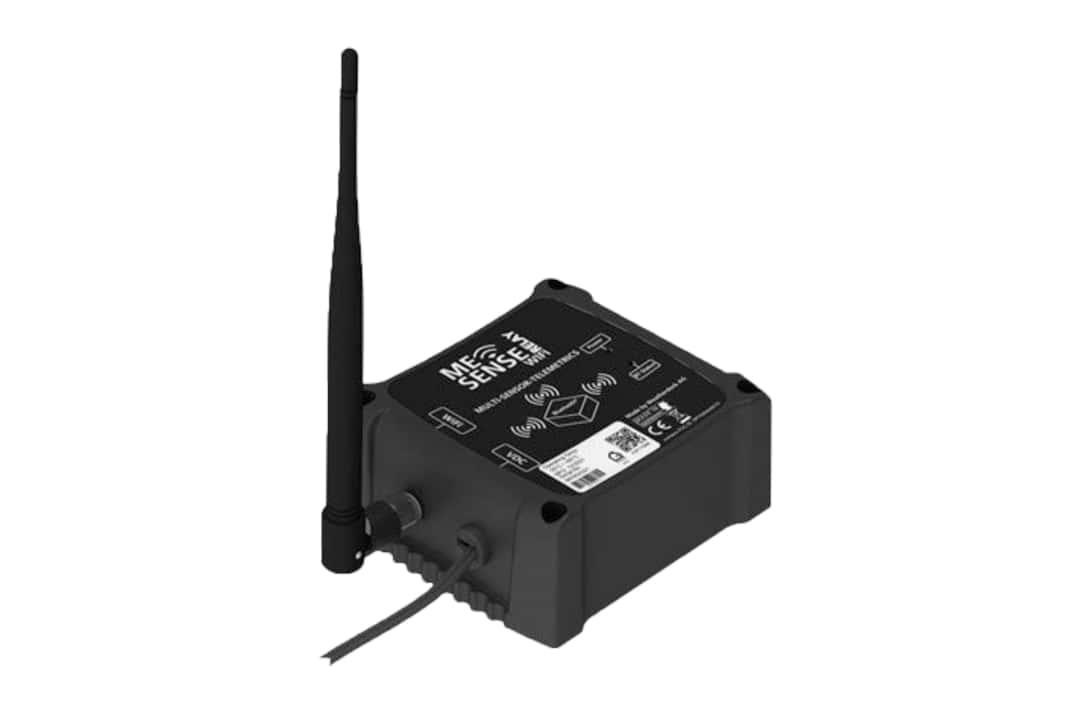



- Costs: from 225 euros, sensors from 89 euros
- Cover: Not applicable
- Ongoing costs/subscription: Basic free of charge, from two sensors 30 euros per year
- Gateway: WLAN or external router required
Weatherdock's remote monitoring system consists of the so-called relay. It measures the voltage and can be expanded via Bluetooth with up to 20 sensors and eight wireless switches, including GPS receivers, voltage, temperature, acceleration, water level, door opening and shore power sensors. Me Sense requires a harbour WLAN or an external router to connect to the Weatherdock cloud. From there, the data is sent to the app via the internet. There is a 30-day history for all measured values and alarm values can be set. The sensors are powered by a button cell whose charge status is displayed in the app. More information: easyais.com
Sense4Boat
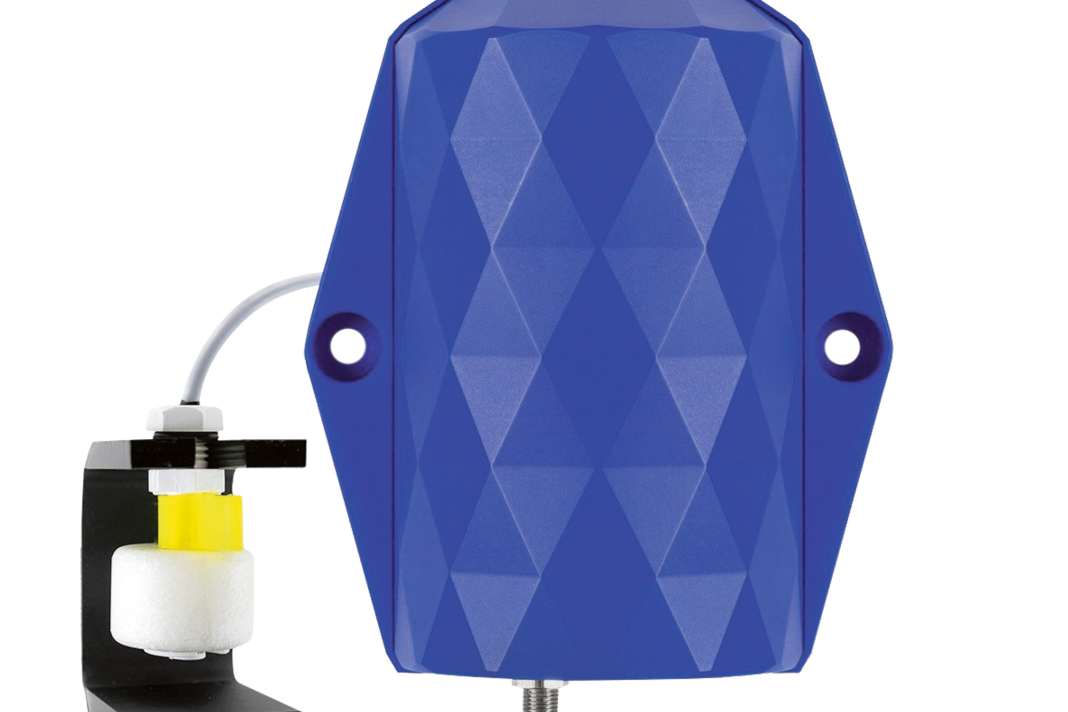


- Costs: 150 to 190 euros per sensor
- Cover: europe-wide
- Ongoing costs/subscription: 1st year included, thereafter from 50 euros per year, depending on the number of sensors
- Gateway: Integrated IoT SIM
Sense4Boat was initiated by the long-standing operator of Marina Punat. The system works without a central unit. This means that each sensor is completely self-sufficient and establishes its own internet connection. The system uses the French IoT service Sigfox, which covers large parts of European coastal waters. Battery, bilge, position and temperature monitoring are available. The sensors are powered by integrated batteries for up to five years, so no cabling is required. The alarms can be configured via a free app and are transmitted either via the app, text message or voice message. Additional telephone numbers or email addresses can also be stored for alerts. More information: sense4boat.com
Sensar Marine
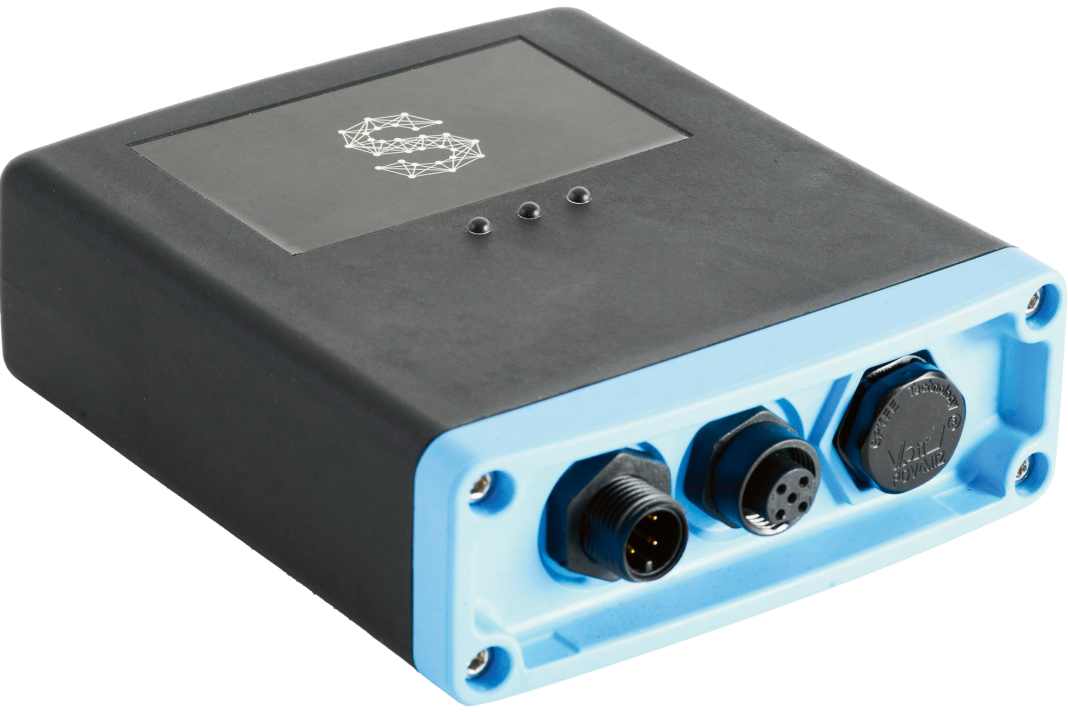


- Costs: about 515 Euro
- Cover: Worldwide
- Ongoing costs/subscription: about 104 euros per year
- Gateway: integrated, no specification
The Norwegian-American Sensar Marine monitoring system is limited to GPS, acceleration sensors, two voltage monitors, water level and temperature sensors and a pump monitor. The Boat Monitor is designed to be particularly robust so that it can also be used in open boats. The power supply is clever: The integrated rechargeable battery guarantees up to 50 days of operating time. As soon as the system detects charging current in the on-board power supply, the buffer battery is automatically recharged. The bilge sensor is not a float switch, but detects the water level. The activity of the bilge pump can also be monitored, allowing defects to be recognised quickly. Another practical feature: the geofence function is activated automatically as soon as the boat has been in one place for more than 15 minutes. If the boat leaves the area, a warning text message is sent. More information: Sensarmarine.com
VirCru



- Costs: from 173 euros, sensors from 68 euros
- Cover: europe-wide
- Ongoing costs/subscription: 113 euros per year
- Gateway: LTE-M, fixed SIM card
VirCru is equipped with a central unit known as a hub and sensors connected via Bluetooth. There are two hub variants depending on the requirements and area of application: The Hub-1 has two voltage inputs and can monitor the activity of the bilge pump. The Hub-2 version is equipped with a GPS receiver and can keep an eye on a battery and the yacht's heeling angle. Various sensors can be added to both control centres via Bluetooth. For example, engine hours can be recorded or data can be transferred from Victron's VE.Direct bus. The sensors have internal batteries for ten years of operation. The hub is supplied with power from the vehicle electrical system, but can also be operated for a week without a power supply thanks to an internal rechargeable battery. More information: Vircru.com
ZigBoat
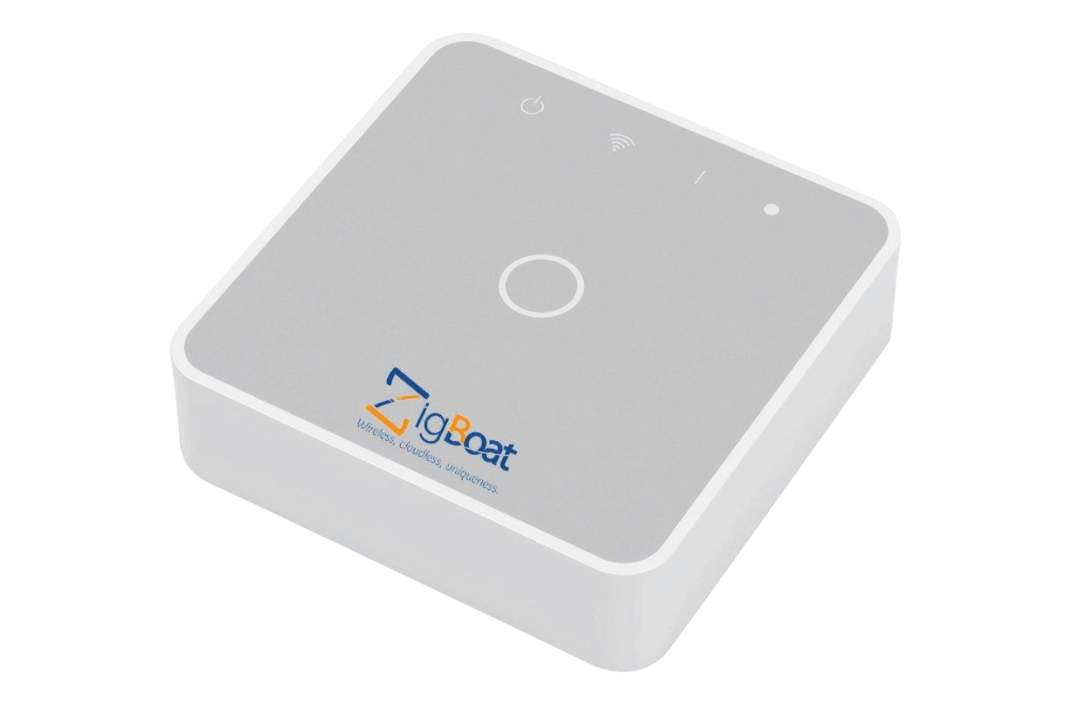


- Costs: 549 Euro, sensors from 165 Euro
- Cover: Not applicable
- Ongoing costs/subscription: none
- Gateway: WLAN or external router required
At first glance, the Glomex system looks similar to the Weatherdock system. It has similar sensors, but cannot switch. The Italians use the Zigbee standard familiar from the smart home sector to communicate with the sensors. ZigBoat also communicates directly with the app on the smartphone via an encrypted connection. There is no need to store data in a cloud service and therefore no need for a paid subscription. If you use the harbour's own Wi-Fi as a connection, you can get by without any additional costs. If no Wi-Fi is available, an external router is required, as the gateway can only connect to the smartphone or another network via Wi-Fi. The sensors are battery-operated and should work for around three to five years. More information: nordwest-funk.eu
Collect and analyse data
Smartboatia
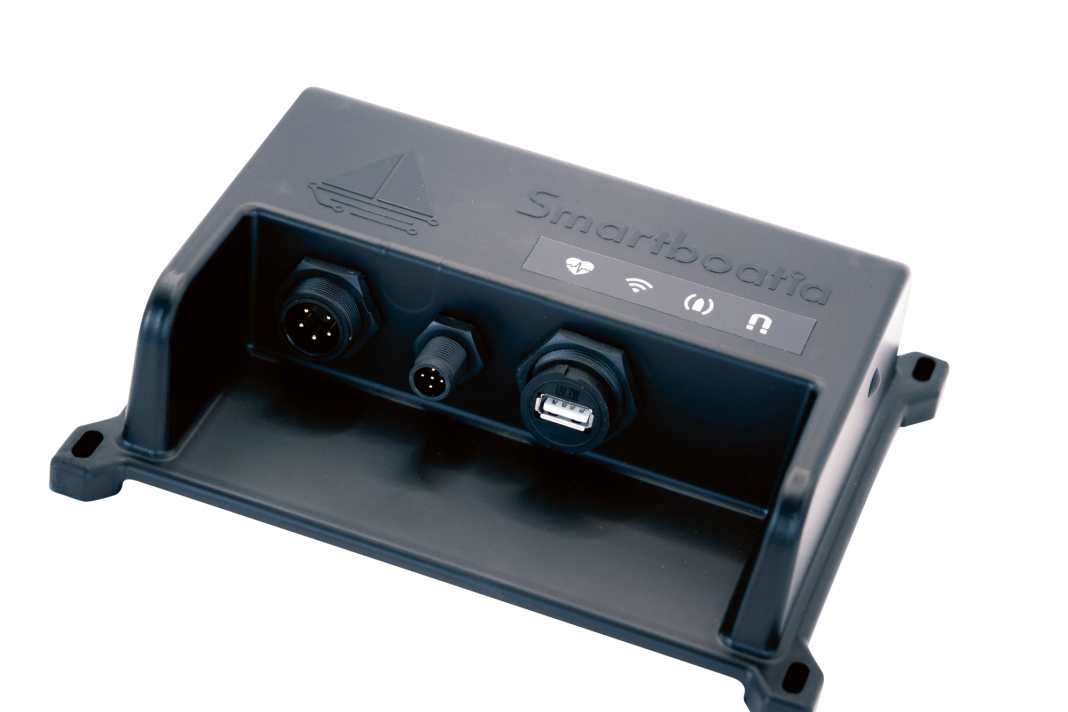


- Costs: 999 Euro
- Cover: europe-wide
- Ongoing costs/subscription: Basic free of charge, Internet connection and monitoring 120 euros per year.
- Gateway: Integrated LTE-NB
With Smartboatia, the focus is on recording and analysing sail-specific data. The hub is connected to the NMEA2000 on-board network. It has a GPS receiver, air pressure and acceleration sensors. It can also monitor the supply voltage and has a Wi-Fi gateway that can be used to retrieve all NMEA2000 data via WLAN. The data is stored in the hub and analysed using AI algorithms to create a logbook or generate a polar diagram. As soon as an internet connection is available, the hub synchronises with the Smartboatia cloud so that the data can also be shared with others. With the Smartboatia subscription, the hub uses a narrowband LTE connection and is permanently online. The subscription is also required for remote monitoring. A special feature is the hardware-based anchor alarm, which responds even when the mobile phone is switched off. More information: smartboatia.com
Njordlink
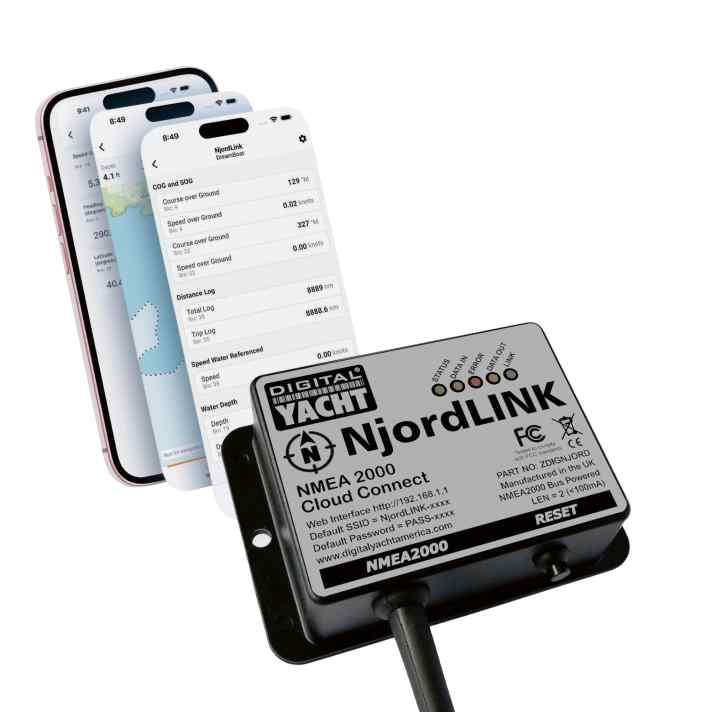
- Costs: 240 Euro
- Cover: Not applicable
- Ongoing costs/subscription: Basic free of charge
- Gateway: WLAN or external router required
Njordlink does not have its own sensors; the system only ensures that the NMEA2000 data collected on board is transferred to a cloud. It can be configured via a free app. The boat data is transferred to the Njord Cloud operated by Digital Yacht and Viam Robotics and can be retrieved from there via the app. The system is still under development and currently offers tracking as well as an anchor alarm that automatically calculates the expected schwoik circle based on water depth and chain length. However, the cloud solution is explicitly designed to allow shipyards or service providers to develop their own apps for analysis. More information: digitalyacht.com
Sailserver 2



- Costs: 118 Euro
- Cover: europe-wide
- Ongoing costs/subscription: from 95 euros per year
- Gateway: Integrated IoT SIM
The Sailserver 2 from Denmark focuses on tracking and logbook creation. The server records the position via an internal GPS receiver. The data from the transducers on board is recorded via the NMEA2000 interface. This data is stored in the device and transferred to the Sailserver cloud. From there, they can be accessed via the app or web interface. With the regatta subscription, analyses can also be carried out retrospectively and individual polar diagrams can be created or compared with the VPP data of an ORC measurement report. Bilge or voltage alarms are not provided. Instead, an anchor alarm can be created that monitors not only the position, but also the water depth and wind conditions. More information: Sailserver.com
Monitoring and remote control
OnDeck Hub
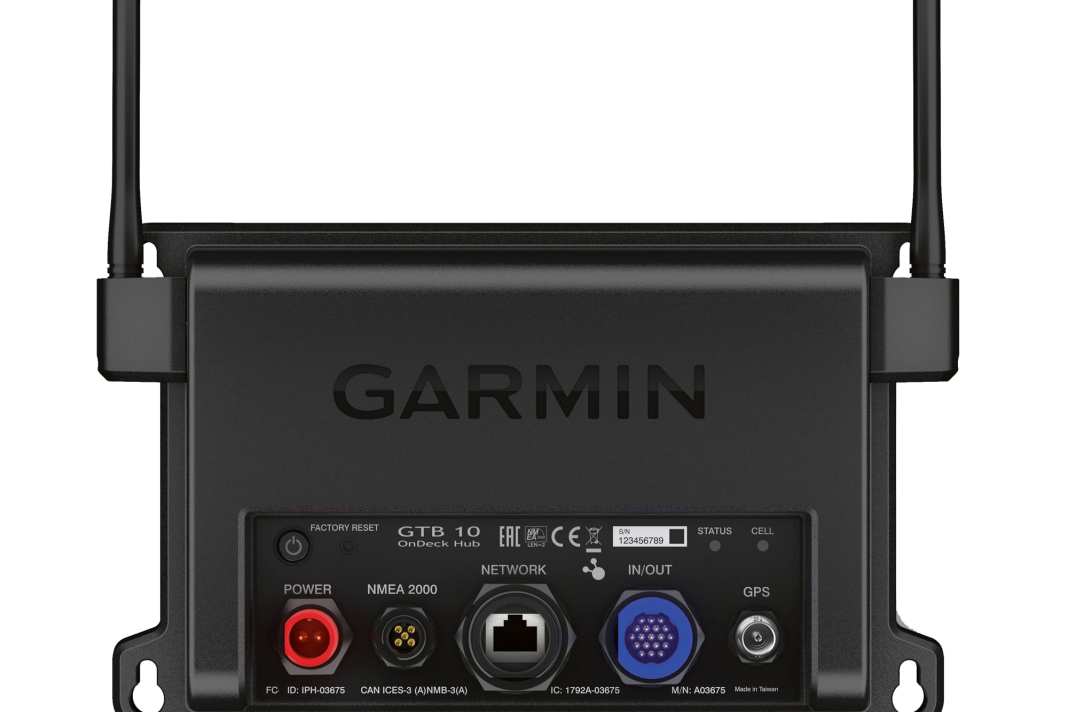


- Costs: 949 Euro
- Cover: europe-wide
- Ongoing costs/subscription: 180 euros per year
- Gateway: Integrated IoT SIM
With the OnDeck Hub from Garmin, the boat can be completely monitored and up to five switching functions can be controlled remotely. The hub communicates with the chart plotter and transducers via NMEA2000. There are separate inputs for the activity of the bilge pump and for the door and shore power sensors. An internal buffer battery also makes the system independent of the on-board power supply for 48 hours. Tracking and remote control run via Garmin's tried-and-tested Active Captain app, with alarms also being sent via SMS. This has the advantage that the app does not have to be running permanently. An OnDeck subscription is required for operation, which also includes the costs for the internet connection. More information: Garmin.com
Yachtsense



- Costs: 1,541 Euro
- Cover: depending on the provider
- Ongoing costs/subscription: none, only data tariff
- Gateway: LTE with two SIM cards, free choice of provider
Raymarine's Yachtsense system is intended for original equipment by the shipyard or as part of a complete refit. The Yachtsense link router is equipped with a GPS and has NMEA2000 and Ethernet interfaces for connection to the on-board network. It can be configured via WLAN using a web interface or alternatively via an Axiom chart plotter. A geofence area can be monitored using the internal GPS. The router also has four switching outputs. It also provides broadband Internet access via an LTE modem. Two LTE SIM cards can be used. If the boat is equipped with Raymarine's digital switching system, it can also be controlled remotely. More information: raymarine.eu
Sentinel
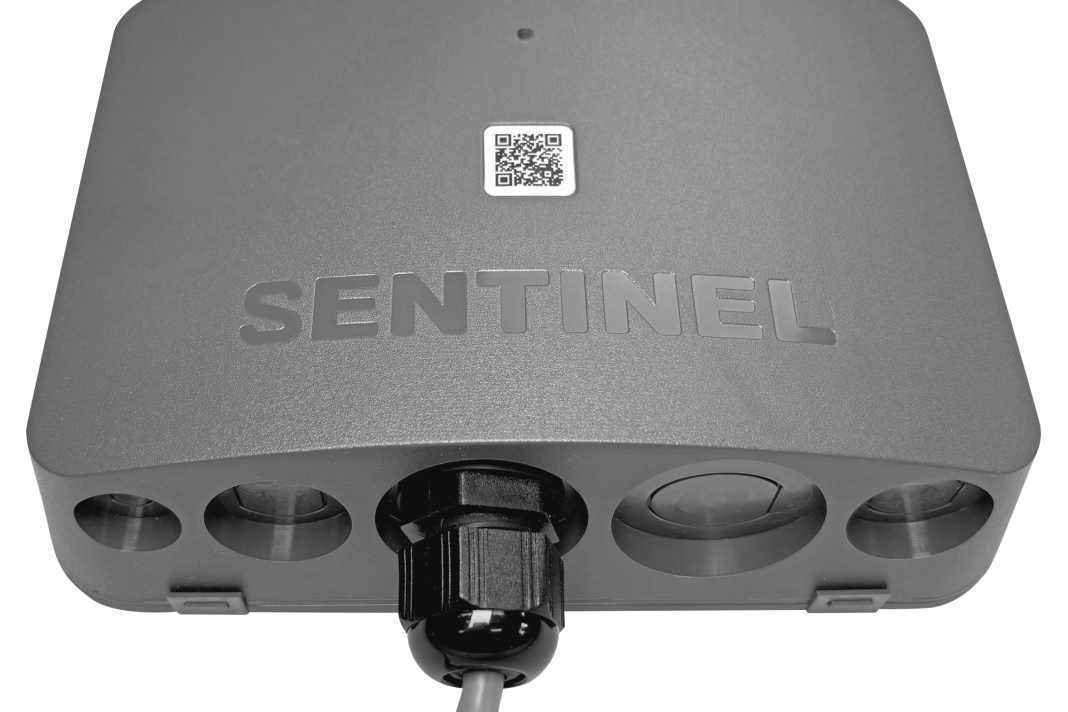


- Costs: Lite from 380 euros, Standard 830 euros
- Cover: according to tariff EU or worldwide
- Ongoing costs/subscription: 96 to 160 euros per year
- Gateway: Integrated LTE SIM
The French Sentinel system has been on the market for several years. It owes its popularity to the fact that HanseYachts and Beneteau occasionally fitted the monitoring system as standard on their yachts. The current model is called the BM50 and is available in different versions. What they all have in common is that they are equipped with an integrated GPS and a fixed SIM card. In addition, three voltages and two switching contacts for bilge or door alarms can be monitored. Additional sensors can be connected via an optional hub. The standard version also offers an NMEA2000 interface and a switching output and supports the CZone digital switching system. More information: Ferropilot.com

